LensRentals has loaned me a Hasselblad XCD 135mm f/2.8 lens for testing. Today I attached the matched 1.7X teleconverter (TC) and the lens collar between the XCD 135 and the X2D body. At first glance, the foot of the lens collar looks like it has an Arca Swiss dovetail. No such luck; it’s the same proprietary tripod mount that Hasselblad used on their V-series bodies. I give them points for consistency, but I subtract points for utility.
For the first test, I used a Zeiss Siemens star about 20 feet away.
- Edelkrone Tripod X Pro
- Arca Swiss C1
- Manual exposure
- ISO 64
- Self-time set to 4 seconds
- AF-S, six shots per f-stop
- Center and lower left corner
- Effective stops: f/4.8, f/5.6, f/8, f/11
- Developed in Lr with default settings except for white balance and sharpening set to 0
In the center, at about 175% magnification:
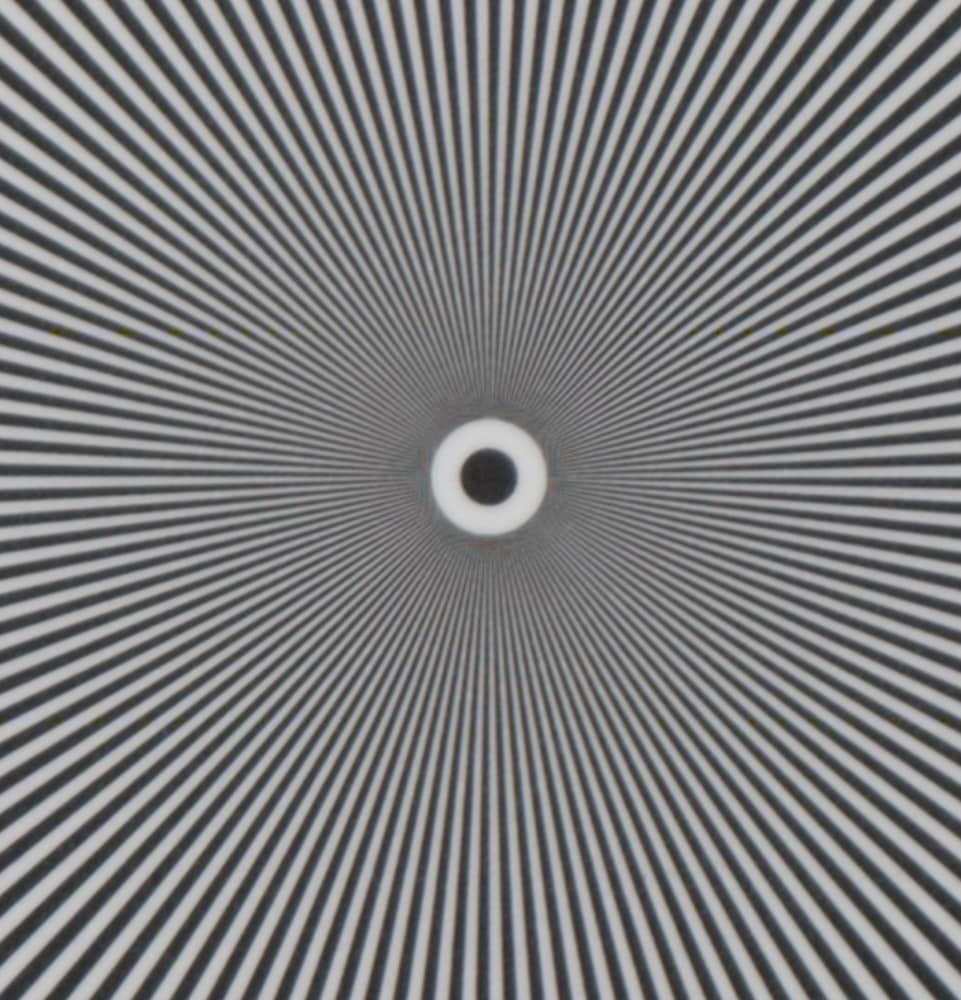
This is good performance for a TC. Just a bit of aliasing is visible.
The XCD 135 with a 1/7X TC is about a 230mm lens. How does it compare with the GF 250? Here’s a shot with the GF 250 on the GFX 100S of a similar, but not identical, Siemens star wide open.
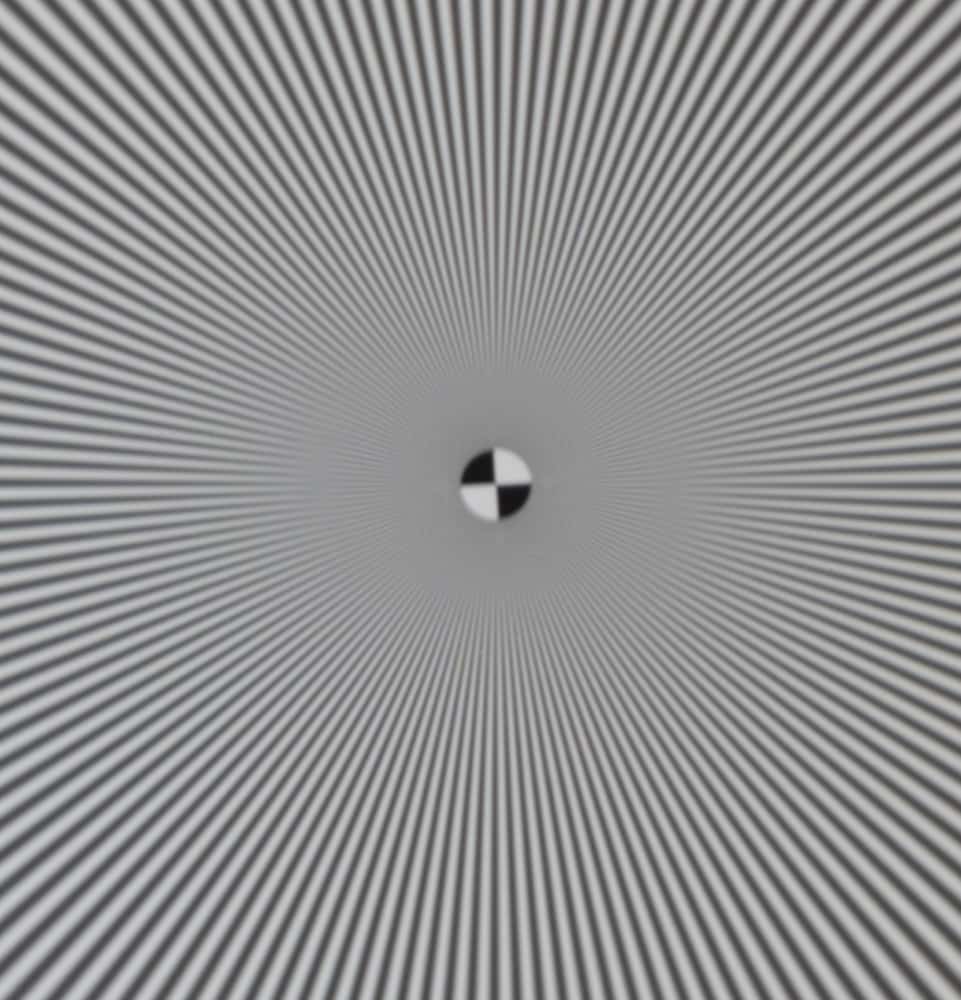
The resolution is quite similar. For a lens with a TC attached, the XCD 135 is doing great here.
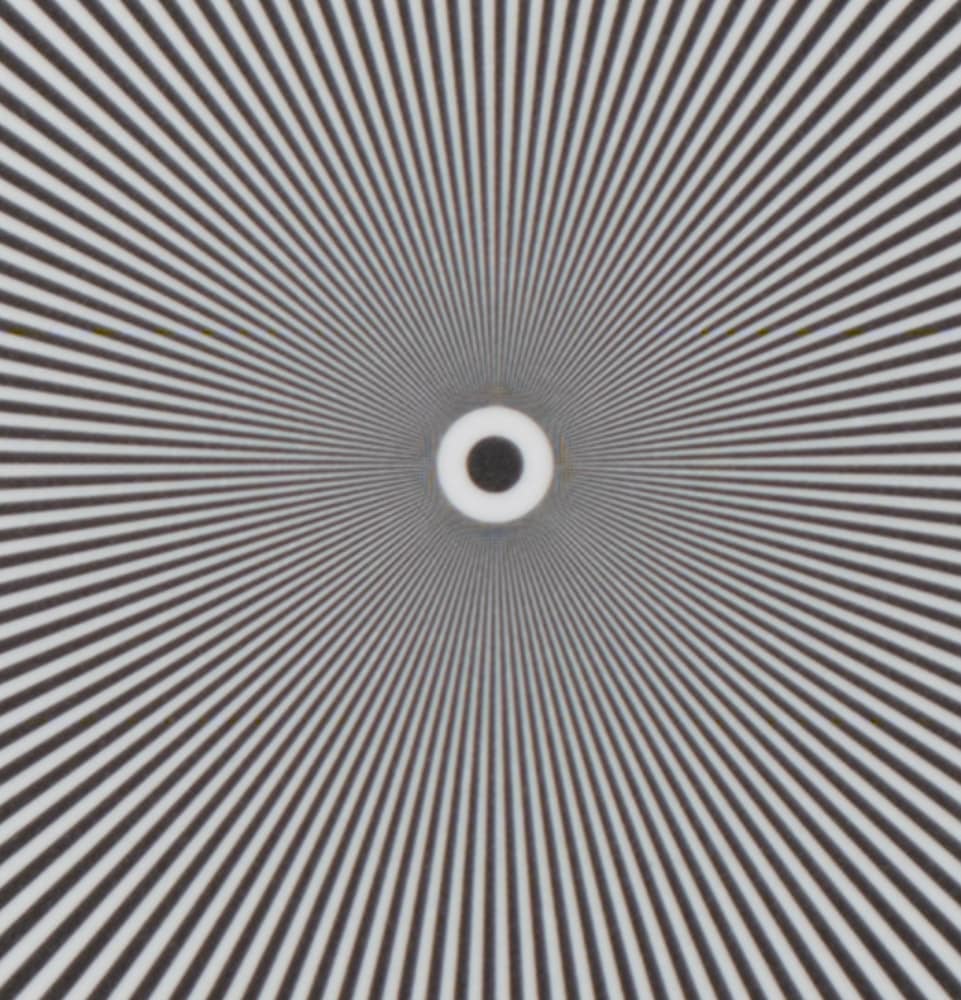
Also good.
Here’s the GF 250 at the same f-stop:
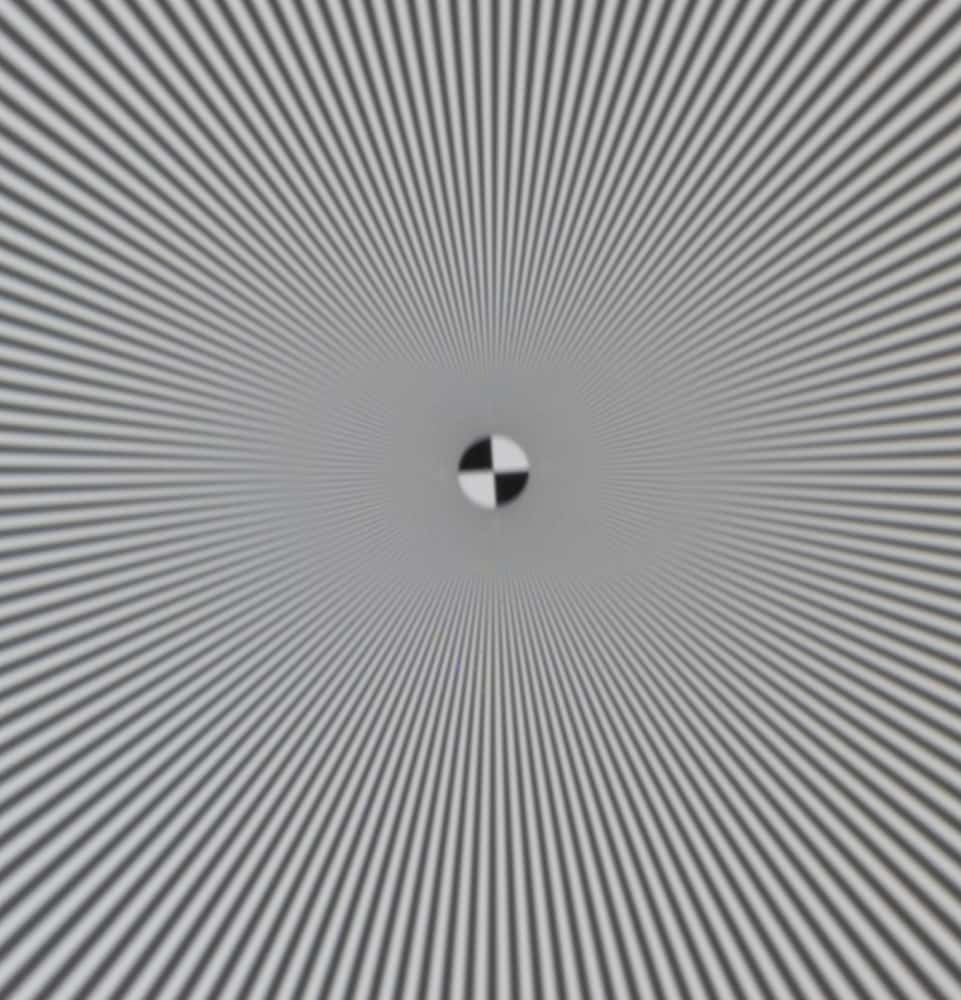
The XCD 135 is actually a hair sharper, although it wouldn’t make any difference in real world photography.
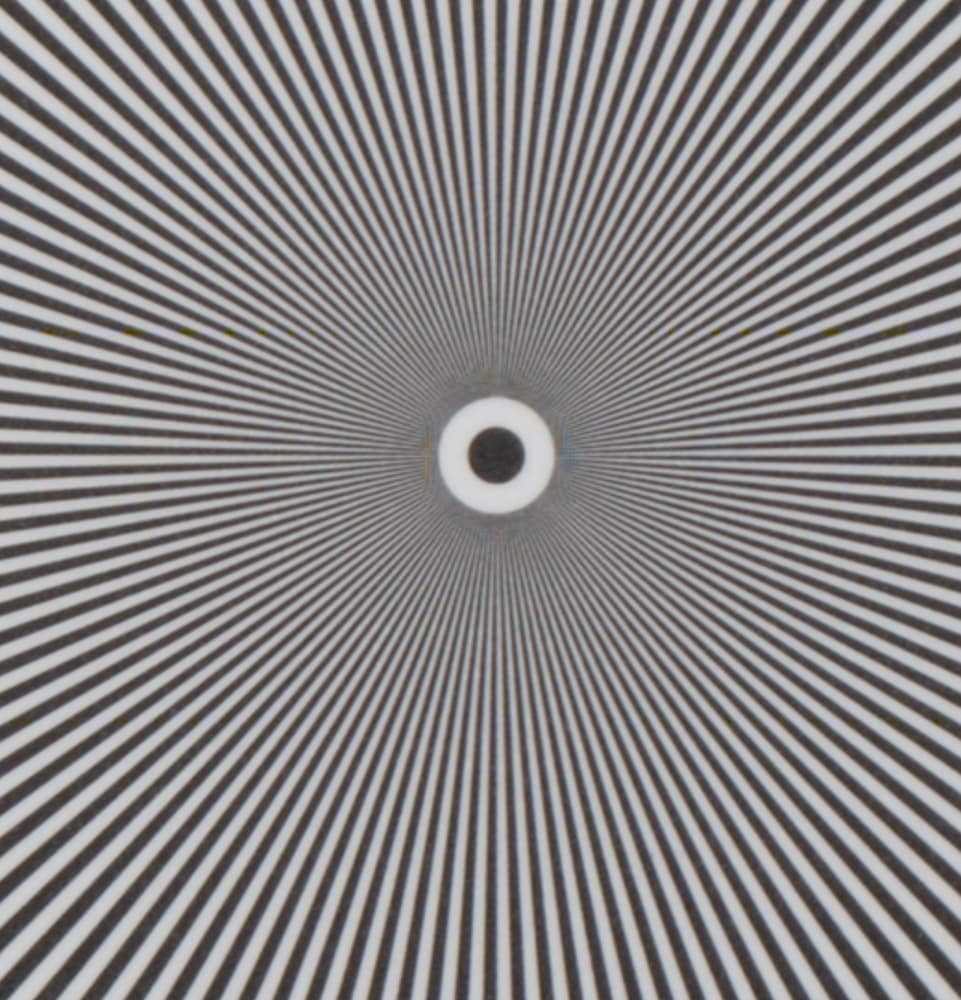
Also good.
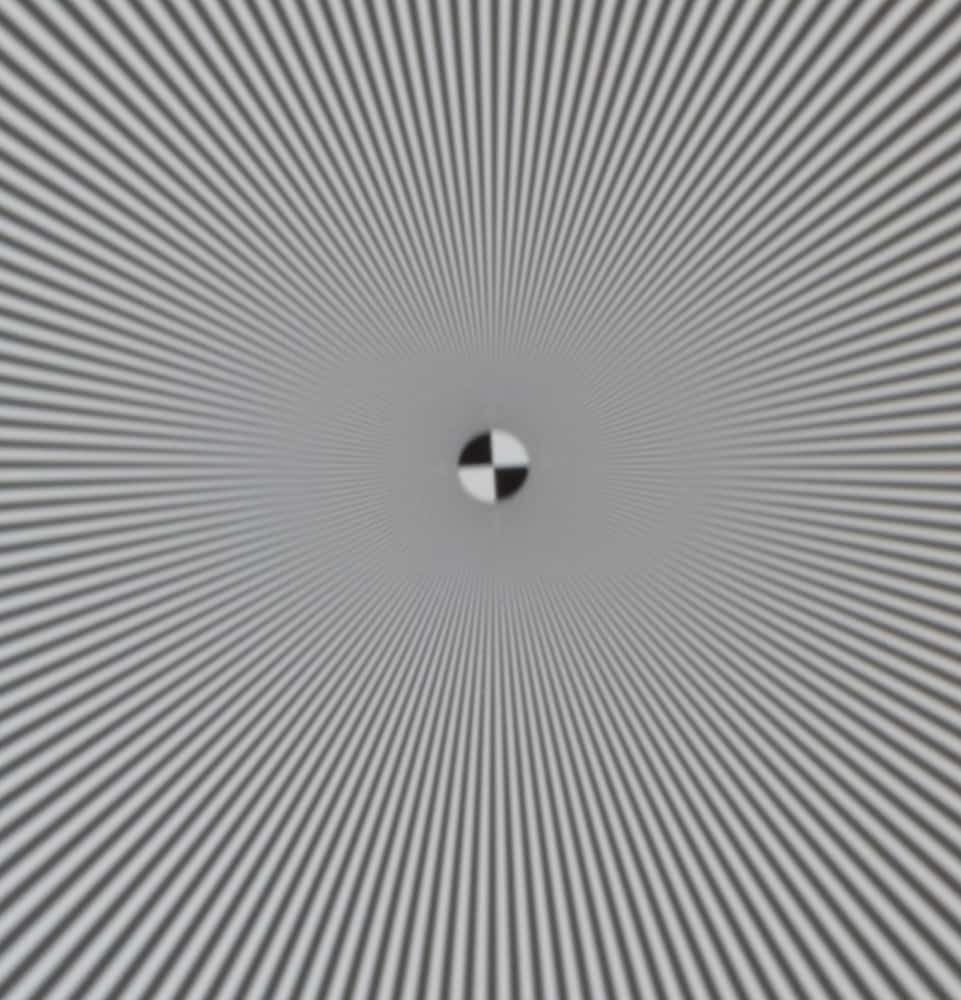
Not quite as good.
XCD 135/2.8 plus TC on X2D, center, f/11Diffraction softens the f/11 shot.
Often, adding a TC to a lens affords only marginal improvement over cropping without the TC. This is not the case here. The lens is laying down detail at near the Nyquist limit at all the stops tested above.
In the lower left corner:
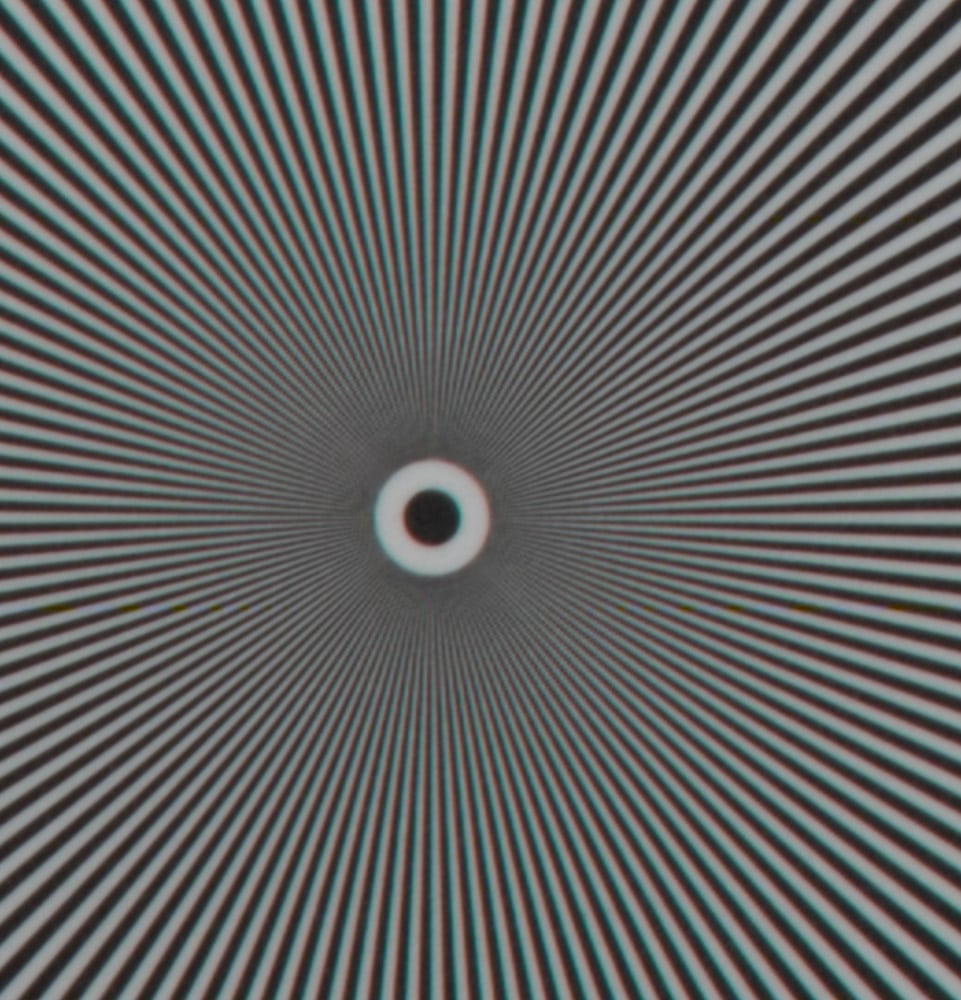
Dimmer, but still very sharp for a lens tested with a TC.
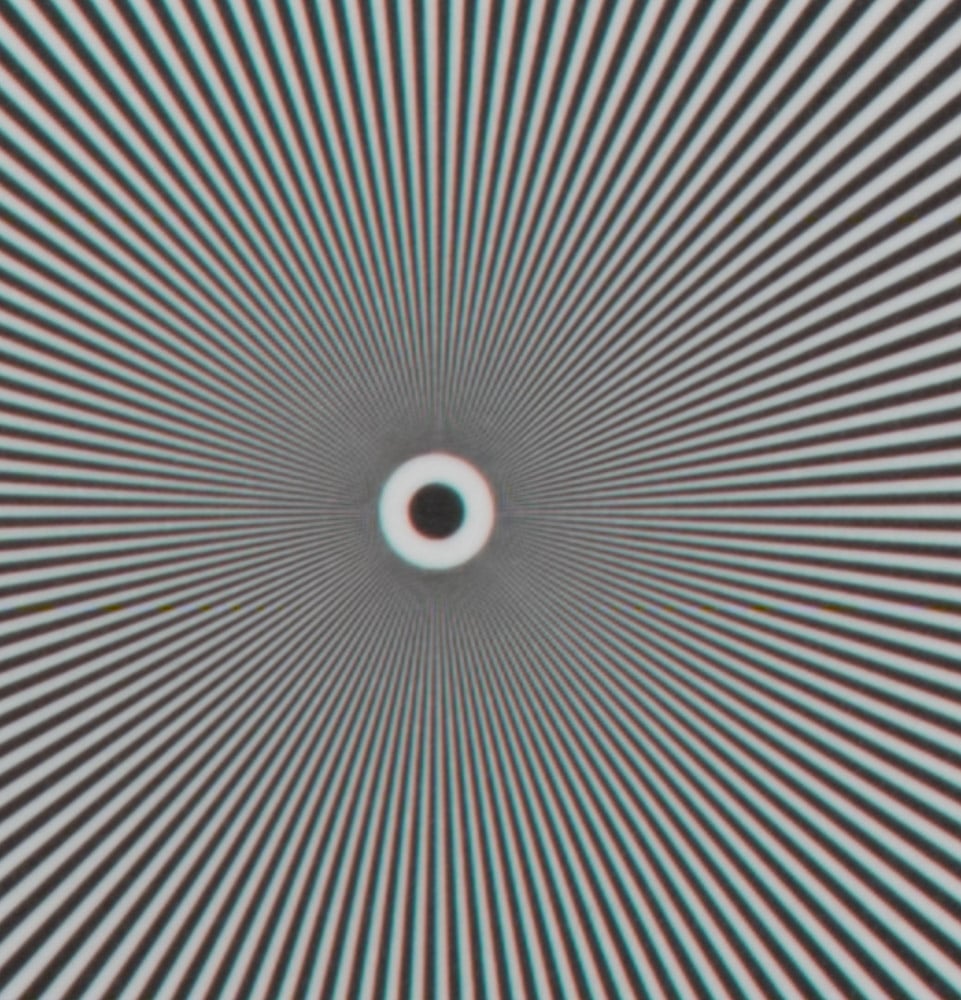
Stopping down 2/3 of a stop brightens up the corners and slightly increases sharpness.
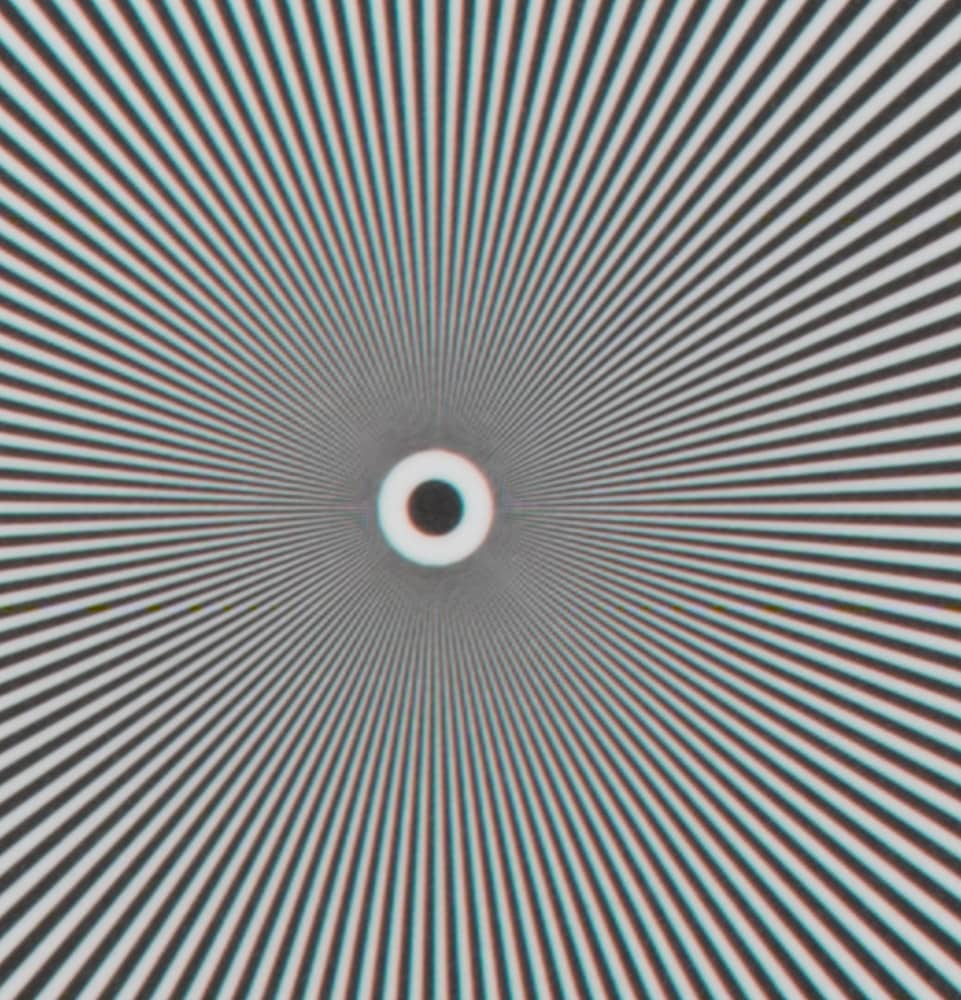
Looks about the same to me, but brighter.
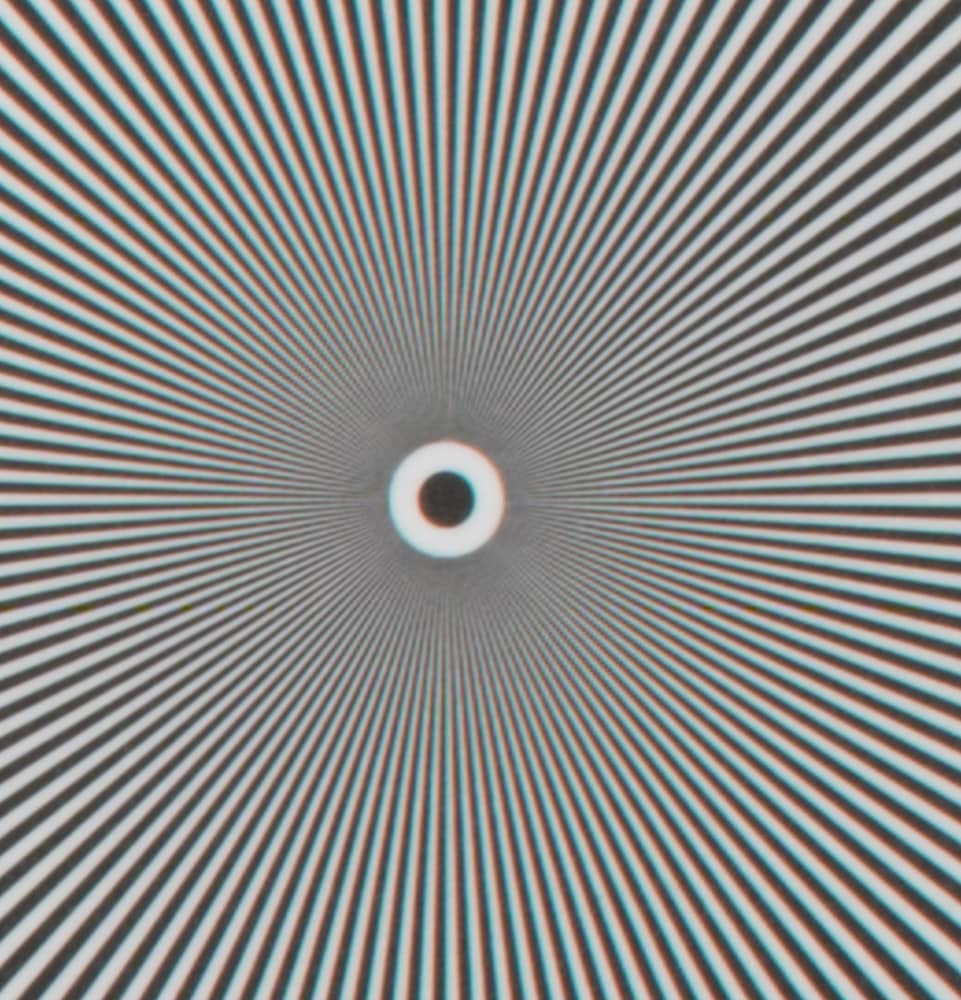
Color me impressed!
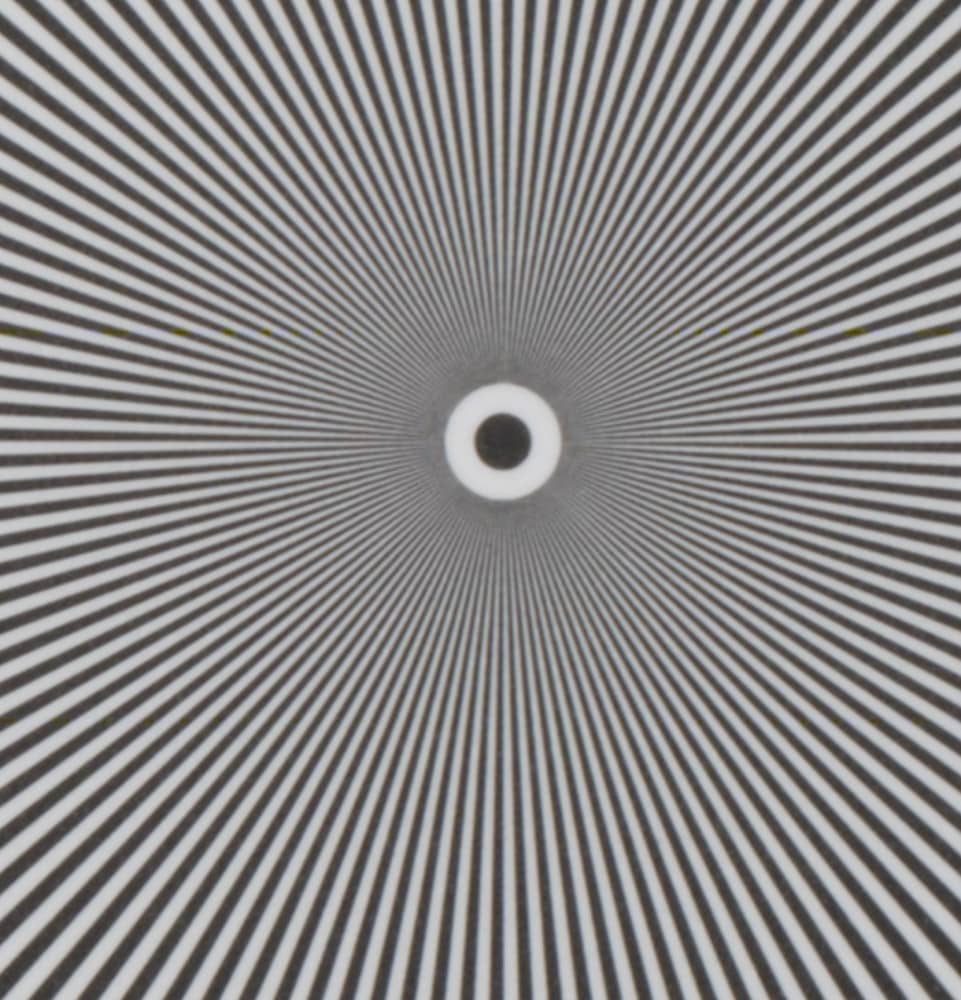
Leave a Reply